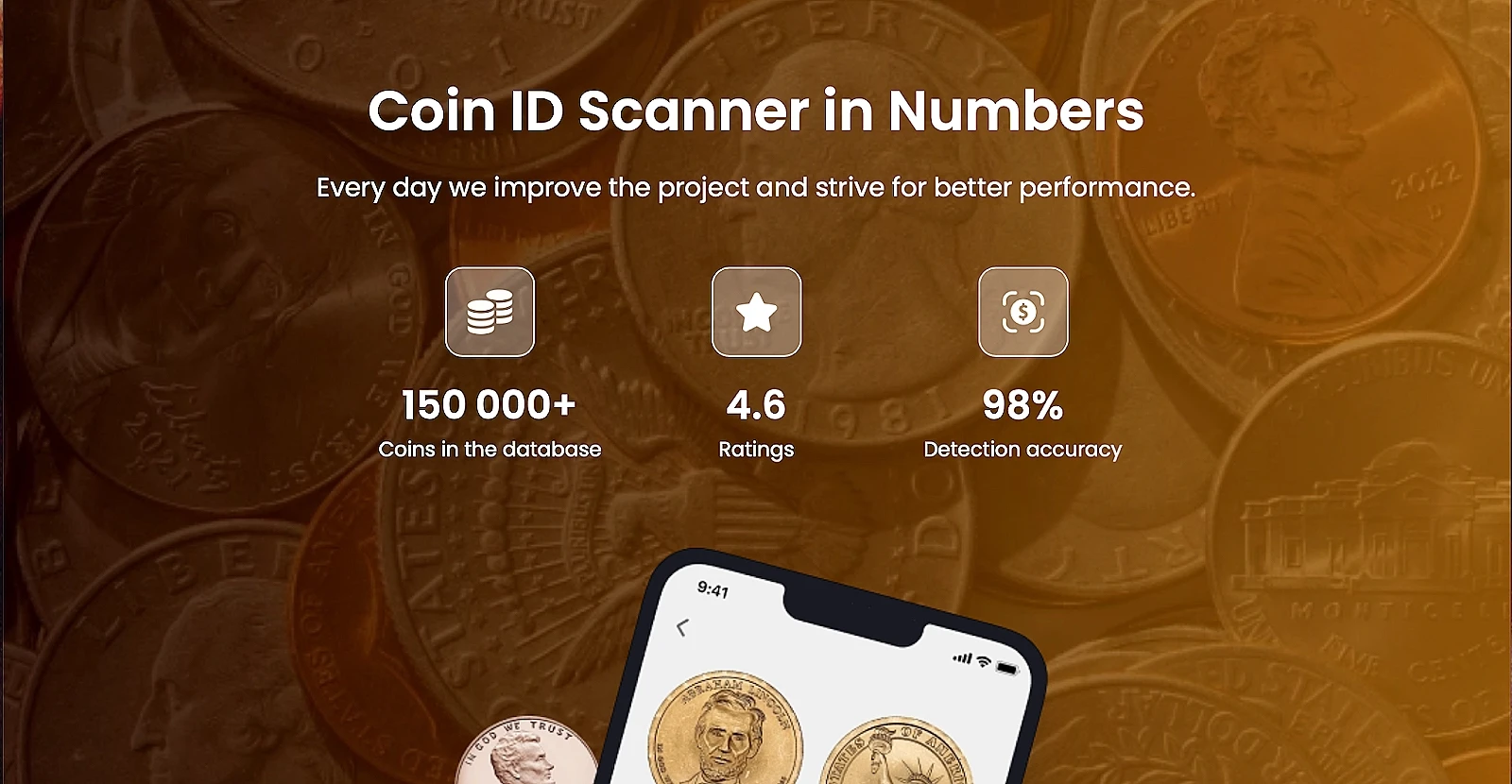Coin collecting in the United Kingdom isn’t just a relaxing pastime—it’s a gateway to history, artistry, and occasionally, significant financial reward. From the ancient hammered coins of early monarchs to the shimmering commemorative pieces of modern times, British coinage tells a story of power, prestige, and precision. Let’s discover how modern technologies can help you learn more about these artifacts, check the value of coins and find true treasures in your pockets.
Why British Coins Stand Out
British coins are among the most studied and collected in the world. This is thanks to several reasons:
- Rich History: With monarchs ranging from Roman emperors to Queen Elizabeth II, Britain’s coins are layered in historical context.
- Design Variability: The UK Mint regularly issues special editions and commemoratives that vary widely in design and collectibility.
- Global Influence: As the British Empire expanded, so did its coinage—making British coins familiar (and collectible) across continents.
Key Characteristics of Valuable British Coins
Not every old coin is worth a fortune—but understanding a few essential indicators can help you separate common currency from potential goldmines. Let’s break them down:
1. 🔢 Low Mintage Numbers
The fewer coins produced, the more valuable they tend to be—especially if those coins enter public circulation. Rare doesn’t always mean ancient.
Examples:
| Coin | Mintage | Approx. Value |
| 2009 Kew Gardens 50p | 210,000 | £50–£200 |
| 1933 George V Penny | 7 known | £50,000+ |
Collectors chase these coins precisely because they’re hard to find. Checking mintages online or through scanning apps can provide quick insight into rarity.
2. 🏰 Historical Significance
Coins that mark important historical events or shifts in monarchy often become collector favourites. Their significance transcends metal value.
Noteworthy Coins:
- 1703 Vigo Five Guineas: Minted from gold seized in a British naval victory at Vigo Bay.
- 2012 London Olympics 50p Series: Includes 29 designs, with some like the Wrestling 50p being far rarer than others.
Owning such coins isn’t just about investment—it’s about holding a slice of history in your hands.
3. ✨ Condition (Grade)
This is where precision matters. Coins are graded from Poor to Mint State (MS-70), with higher grades fetching dramatically higher prices. Proof coins—struck with exceptional clarity and detail—are even more desirable.
Grading Snapshot:
| Grade | Description |
| MS-65+ | Mint State; uncirculated, no wear |
| Proof | Frosted details, mirrored background |
| VF-20 | Very Fine; moderate wear |
If you’re unsure how to assess condition, using a scanner or consulting a grading guide is a great start.
4. 🪙 Metal Content
Some coins hold value simply because of the metals they’re made from. Gold Sovereigns and Silver Britannias fall into this category.
| Coin Type | Metal | Bullion Value |
| Gold Sovereign | 22K Gold (7.98g) | £300–£400+ |
| Silver Britannia | .999 Silver | £20–£40+ |
Even if the coin isn’t rare in itself, high-purity metal content can make it worthwhile, especially during economic uncertainty when precious metals rise in value.
How Can a Valuable Coin Look?
Let’s take a deeper look at one of the most talked-about modern British coins: the 2009 Kew Gardens 50p. At first glance, it looks like just another commemorative coin—but with a mintage of just 210,000, it’s the rarest 50p ever released into circulation.
Collectors report finding them in change, car glove compartments, and inherited collections. Today, even circulated versions can sell for over £100 on the secondary market.
That’s why understanding what to look for is the first and most crucial step. It could mean the difference between tossing a valuable coin aside—or preserving a piece of modern history.
Step-by-Step Identification Process
1. Examine Physical Attributes
Begin your assessment by studying the coin’s appearance, weight, and edges. The smallest detail can indicate immense value—or expose a clever replica.
📏 Weight and Size
Each coin has a standard weight and diameter. Deviations can suggest either a minting error (which increases value) or a counterfeit.
Example:
An 1817 Gold Sovereign should weigh exactly 7.98 grams and measure 22.05 mm in diameter. Use a digital scale and calipers for accurate readings.
🧾 Edge Lettering
Many high-value British coins include edge inscriptions. These often commemorate events and help authenticate the coin.
- The 2002 £2 Golden Jubilee coin features “FLOREAT REGINA” on its edge (“Let the Queen Flourish” in Latin).
- The 1997–2015 £2 coins often include literary quotes, like “Standing on the Shoulders of Giants.”
Run your finger along the coin’s edge. Missing or misaligned lettering might indicate a rare mint error.
🏛️ Mint Marks and Special Symbols
Some coins include small mint marks or initials that signal their production origin or grade.
| Symbol | Meaning |
| P | Proof coin |
| BU or BR | Brilliant Uncirculated |
| Royal Mint Logo | Indicates UK government issue |
Coins minted for collectors (especially proof coins) often have these markings. Their absence or modification could drastically affect value.
2. Research Key Details
Once you’ve recorded the coin’s physical traits, it’s time to dive into its historical and numismatic background.
📅 Date and Monarch
Coins minted under monarchs with short or turbulent reigns are often the rarest.
| Monarch | Collectibility Factor |
| Edward VIII | Abdicated before circulation; trial coins are ultra-rare |
| George V (1933) | Pennies not issued for circulation; just 7 known |
| Queen Victoria (Young Head, Gothic) | Highly sought for design and rarity |
Use a magnifying glass to ensure the date and portrait are clearly visible. Any inconsistency—like a misaligned or reversed number—might signal a mint error.
🛠️ Coin Errors and Misprints
Minting errors are accidental but prized. Collectors often pay thousands for what appears to be a mistake.
Some famous British coin errors include:
- 1983 “New Pence” 2p: The coin should have read “Two Pence.”
- 2008 Undated 20p: A batch of coins was released without a date—one sold for over £7,000.
- Rotated dies: Where the reverse side is misaligned relative to the obverse.
Use your hands and eyes to gently rotate the coin. If the queen’s head is upright, the reverse should be too. If not, you might be holding something special.
3. Use Technology
Modern problems need modern solutions—even in numismatics. If you’re unsure whether a coin is valuable, there’s no need to dig through hundreds of pages or forums. Digital tools can fast-track your research.
💡 Try the Coin ID Scanner App
One standout option is Coin ID Scanner, an intuitive app for identifying coins by simply scanning their face.
App Features:
- Image Recognition: Instantly identifies coins using advanced visual matching.
- Rarity Data: Access current mintage stats and collector value ranges.
- Authentication Help: Compares known dimensions and designs to detect fakes.
- Real-Time Trends: Shows the latest auction prices and interest in similar coins.
Whether you’re a beginner or a seasoned collector, using this kind of technology ensures you’re always a few steps ahead of the average enthusiast.

Top 5 Valuable British Coins to Hunt
Many collectors begin their journey in the hope of finding a hidden gem—and sometimes, it really happens. Here are five of the most valuable and desirable coins in the UK, each with a unique story and collector value:
| Coin | Key Details | Estimated Value |
| 2009 Kew Gardens 50p | Only 210,000 minted | £50–£200 |
| 1933 George V Penny | Only 7 officially minted | £50,000+ |
| 1703 Queen Anne Vigo 5 Guineas | Minted from captured Spanish treasure | £100,000+ |
| 1986 Commonwealth £2 | First bi-metallic £2 coin | £100–£500 |
| 1945 Silver Threepence | Last year of silver issue | £50–£5,000 |
Why These Coins Matter
- The Kew Gardens 50p is a modern rarity that’s still in circulation, making it the ultimate change-finder’s dream.
- The 1933 Penny is practically mythological—a collector’s holy grail with only a few public appearances.
- The Vigo 5 Guineas has immense historical significance, crafted from seized enemy gold.
- The 1986 £2 coin, often overlooked, marked a technological transition in minting.
- The 1945 Silver Threepence bridges the end of an era, with its silver content and wartime history.
If any of these coins appear in your collection or come your way, verify their condition, seek authentication, and store them securely.
Expert Tips for Beginners
Starting your collection can be both exciting and overwhelming. Here are expert-backed tips to help you avoid common pitfalls and build a high-quality collection:
1. 🧤 Handle Coins Properly
- Always handle coins by their edges to avoid fingerprints and oils.
- Use cotton gloves or coin tongs when examining high-grade or proof coins.
- Store your coins in acid-free holders, capsules, or albums.
2. 📈 Monitor Market Trends
- Coin values fluctuate over time. Follow auction platforms like Heritage Auctions, eBay UK (sold listings only), and The Royal Mint for up-to-date pricing.
- Pay attention to news from the Royal Mint about upcoming commemorative releases or coin recalls—they often spike in value.
3. 🧾 Authenticate Before You Sell or Buy
- If a coin appears highly valuable, get it professionally graded by services like PCGS UK or NGC UK.
- Compare your coin with authenticated examples using high-resolution photos or the Coin ID Scanner app to confirm exact design, font, and mint marks.
4. 🤝 Join Collector Communities
- Platforms like Change Checker, The British Numismatic Society, and online forums offer swap systems, value guides, and expert discussions.
- Use these communities to learn, trade, and validate rare finds with fellow collectors.
5. 📲 Use Smart Tools to Your Advantage
As emphasized earlier, combining traditional numismatic methods with digital tools gives you an edge. The Coin Identifier app is a must-have:
- Scan coins for fast recognition and immediate feedback.
- Check values based on condition and current demand.
- Track your collection with custom lists and rarity indicators.
- Compare images to spot fakes or altered pieces.
Whether you’re collecting for love, legacy, or luck, remember: Every coin has a story. Some are worth far more than you think.
Happy hunting—and may your next find be a rare gem.













